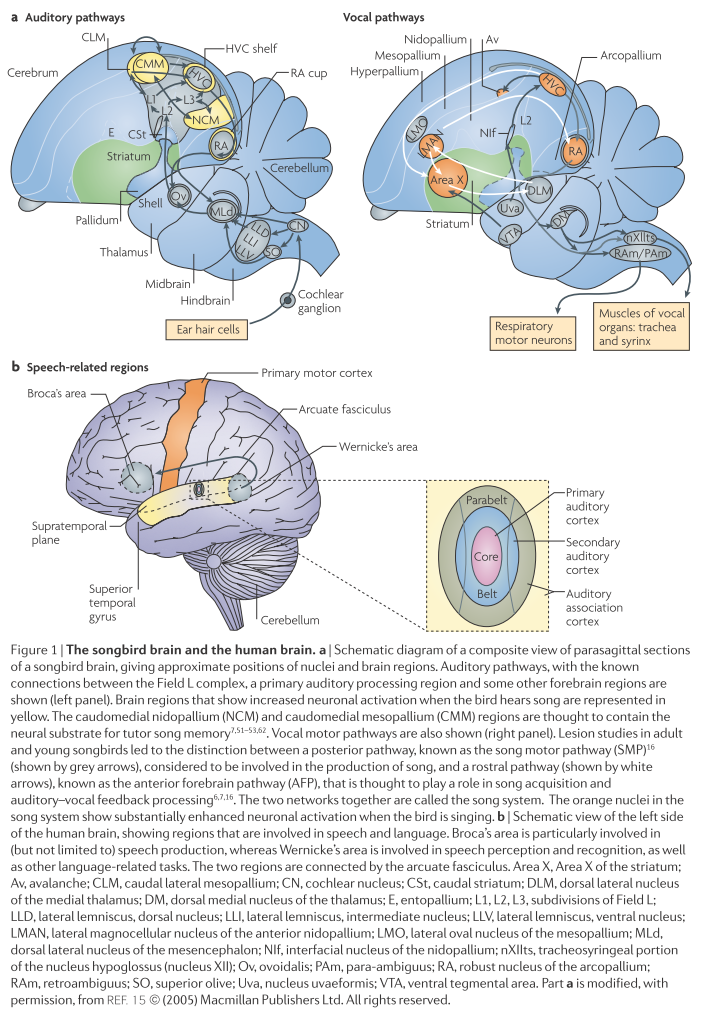In my last post, I made reference to the similarities between birdsong and human speech, and how the development of these two might inform us on the evolution of language. So, it comes as a pleasant surprise that there is a new review in Nature Neuroscience on the very topic: Twitter Evolution: converging mechanisms in birdsong and human speech (click here for paper). I haven’t yet had chance to fully read the paper, but I think the following figure is quite instructive of the connective complexity we’re dealing with:
Tag: domain specific
Domain-General Regions and Domain-Specific Networks
The notion of a domain-specific, language acquisition device is something that still divides linguists. Yet, in an ongoing debate spanning at least several decades, there is still no evidence, at least to my knowledge, for the existence of a Universal Grammar. Although, you’d be forgiven for thinking that the problem was solved many years ago, especially if you were to believe the now sixteen-year old words of Massimo Piattelli-Palmarini (1994):
The extreme specificity of the language system, indeed, is a fact, not just a working hypothesis, even less a heuristically convenient postulation. Doubting that there are language-specific, innate computational capacities today is a bit like being still dubious about the very existence of molecules, in spite of the awesome progress of molecular biology.
Suffice to say, the analogy between applying scepticism of molecules and scepticism of Universal Grammar is a dud, even if it does turn out that the latter does exist. Why? Well, as stated above: we still don’t know if humans have, or for that matter, even require, an innate ability to process certain grammatical principles. The rationale for thinking that we have some innate capacity for acquiring language can be delineated into a twofold argument: first, children seem adept at rapidly learning a language, even though they aren’t exposed to all of the data; and second, cognitive science told us that our brains are massively modular, or at the very least, should entail some aspect that is domain specific to language (see FLB/FLN distinction in Hauser, Chomsky & Fitch, 2002). I think the first point has been done to death on this blog: cultural evolution can provide an alternative explanation as to how children successfully learn language (see here and here and Smith & Kirby, 2008). What I haven’t really spoken about is the mechanism behind our ability to process language, or to put it differently: how are our brains organised to process language?
Continue reading “Domain-General Regions and Domain-Specific Networks”

